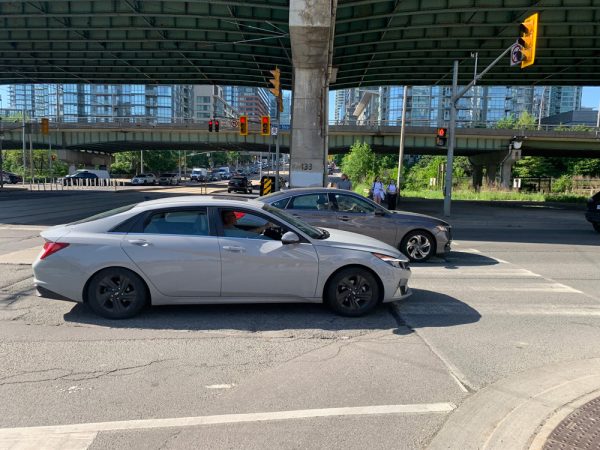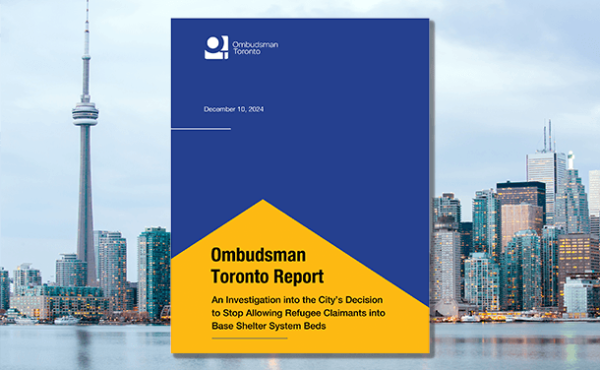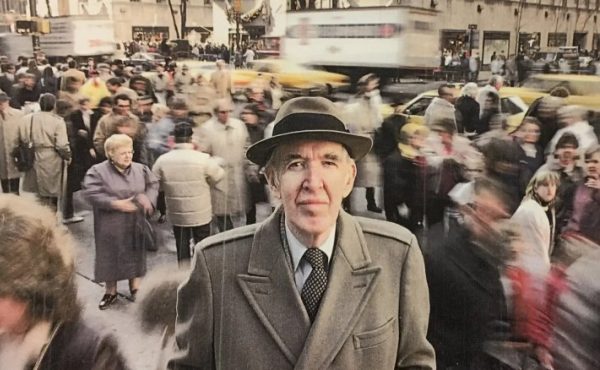Much-needed repair work to the western portion of the Gardiner Expressway began this spring, sparking a lot of consternation about the disruptions to drivers resulting from the work. In response, this week City Council approved a motion from Mayor Chow asking Transportation staff to look for ways to accelerate the project.
It is sad, yet not surprising, to see Council spring into action to save drivers a few minutes on their commute, while at the same time larger safety issues that are looming for vulnerable road users around the urban expressway are left undiscussed.
In November 2023, Mayor Chow and Premier Ford came together, agreeing to a historic financial new deal between the City of Toronto and the Province of Ontario. This deal centres on the province taking over the large financial burden of the Gardiner Expressway and the Don Valley Parkway (DVP). Six months later, there are still a lot of details to be worked out and questions to be answered. While the financial implications for the city are significant, a deeper question must be asked: what is the city losing in handing over these highways?
There are three potential consequences of this deal:
1) Loss of Control Over Road Use
One of the most significant implications of the province taking control of the Gardiner and DVP is the loss of municipal authority over road use and projects. The Ministry of Transportation (MTO) will gain jurisdiction over everything within 400 metres of an on-off ramp, or the centerline of the highway. This includes sidewalks, curbs, bike lanes, and safety islands. For the Gardiner, this 400-metre radius extends from the lake in the south to Queen Street in the north. That’s a big chunk of real estate that impacts the residents of Canada’s largest city.
The experience of municipalities in Ontario seeking MTO approval for road improvements within this 400-metre zone is very discouraging. The province seems uninterested in supporting municipal requests for much-needed safety upgrades. By giving up control of these highways, Toronto may be sacrificing its ability to build Complete Streets that support critical city plans and policies, like TransformTO climate goals. Densely populated neighborhoods like Parkdale, Liberty Village, and Mimico, as well as the Lakeshore East LRT, an important transit project that Mayor Chow campaigned on, are all areas that would be subject to MTO oversight. As the experience of the Eglinton Crosstown construction has shown, provincial oversight of transit projects does not always go very well.
2) Conflicting Road Safety & Vision Zero Priorities
Many on-off ramps along the Gardiner and DVP do not conform to current MTO guidelines. which prioritize moving motor vehicles at very high speeds. This priority directly conflicts with the city’s posted speed limits and Vision Zero Road Safety Plan. Reducing traffic fatalities and serious injuries (KSIs) hinges on reducing the volume of speeding traffic, especially in areas bounded by arterials and on-off ramps to expressways and 400 series highways. MTO’s guidelines do not allow for signalized stops, which are essential for enhancing road safety.
Consider Toronto’s recent safety improvements to the DVP ramp eastbound on Danforth Avenue. These enhancements, including a signalized intersection to separate cars and bikes, might never have been possible under MTO leadership. What if MTO wants to remove such safety features, or rejects similar installations in other locations? When the city and MTO disagree, the province will win, every time.
3) Lost Opportunities for Economic Development and Public Health
Over the years, Toronto has benefited from repurposing and revitalizing sections of the Gardiner and DVP. Numerous community events, such as Bike for Brain Health, utilize these highways to promote public health and recreation. The City has transformed parts of these highways into iconic spaces like The Bentway and Love Park. The Six Points interchange project in Etobicoke will see a vibrant, mixed-use, transit-oriented community built in place of a tangled network of highway interchanges and car-centric infrastructure. All these initiatives provide significant public health benefits, support TransformTO’s climate goals, and generate hundreds of millions of dollars in economic benefits. However, these initiatives may come to an end if the MTO gains control of the urban expressways. Public space and public health have never been MTO priorities.
While the financial aspects of Toronto’s new deal with the province are important, it’s vital to consider the broader implications of this transaction. The City may be giving up more than just highways; it could be surrendering control over the future of its road safety and climate action goals, along with countless opportunities for a more sustainable urban environment. It’s essential that both the province and the city carefully evaluate the long-term consequences and strike an agreement that allows Toronto to maintain control over its destiny while benefiting from the financial relief this deal offers. Only by considering the hidden costs can we ensure a brighter and more sustainable future for our city.
David Simor is Co-Chair, Toronto Alliance for Safe and Active Streets (TCAT, Cycle Toronto, 8 80 Cities, Toronto Environmental Alliance, Access Alliance Multicultural Health & Community Services, Friends and Families for Safe Streets, Walk Toronto, Bicycle Mayor of Toronto)




